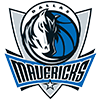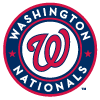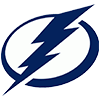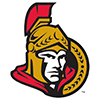This is a list of my final pre-draft rookie rankings for the 2023 class, running through a top 75 broken up into nine tiers. For format it assumes 1QB, and PPR or 0.5PPR scoring.
TIER 1
Bijan Robinson, RB, Texas
Jahmyr Gibbs, RB, Alabama
Robinson is an uncommon running back prospect but not a rare one. He is not as good of a prospect as players like Jonathan Taylor or Nick Chubb. It's not obvious why he'd be a better prospect than Travis Etienne or Breece Hall, either, yet the fact that Robinson has the highest projected draft capital of the group has seemingly led some NFL observers to assume Robinson must therefore have the most talent of the group. Robinson is very good – he'd easily compare to someone like Marshawn Lynch – but I'd be shocked if he's the best running back in the NFL at any point. Gibbs probably won't be the best running back in the NFL at any point, either, but because of his rare pass-catching and big-play ability I think Gibbs will produce fantasy point totals closer to Robinson than most assume, especially in PPR.
Rare traits matter a lot, and Gibbs is a memorable prospect because there is only one other NFL running back in the last 30 years who definitely had as much pass-catching volume ability and speed as Gibbs. That would be Marshall Faulk. This isn't to say Gibbs will prove as good of an NFL receiver as generally great pass-catching backs like Austin Ekeler or Alvin Kamara, only that other than Faulk no other running back could project for Gibbs' usage level as a pass catcher while running a 4.36 40. Ekeler ran a pro day 4.47 at 195 and Kamara ran a 4.56 at 214. Gibbs' pass-catching history and 4.36 combine speed don't guarantee him success in the NFL, but the fact that he's objectively rare to a multi-decade extent indicates uncommon upside. Of course, Gibbs is not Faulk. Faulk had Gibbs' speed at 206 pounds rather than 199, and Faulk was an obscenely productive workhorse runner at both the college and NFL level. Gibbs, by contrast, was a part-time runner at Alabama and Georgia Tech, meaning he's likely only a rotational runner in the NFL, too. It's just that no one will mind all that much if he's catching 80-plus passes.
TIER 2
Zach Charbonnet, RB, UCLA
Jordan Addison, WR, USC
Jaxon Smith-Njigba, WR, Ohio State
Quentin Johnston, WR, TCU
Charbonnet isn't quite on the level of Robinson and Gibbs, but still safely ahead of Devon Achane from the next tier. The DeMarco Murray comp really works for Charbonnet.
Addison, Smith-Njigba and Johnston are pretty much interchangeable depending on the traits you prefer, but I rank them here in descending order of projected per-snap target rate. Addison and Smith-Njigba lack a vertical game but should draw a lot of targets underneath, while Johnston can't draw targets rapidly but could conceivably offset that with better YPT and better touchdown percentages than the smallish Addison and Smith-Njigba.
TIER 3
Devon Achane, RB, Texas A&M
Marvin Mims, WR, Oklahoma
Tyler Scott, WR, Cincinnati
Anthony Richardson, QB, Florida
Achane has workload limitations due to his small build, but from scrimmage he will likely prove effective. The comparison is Warrick Dunn, not Javian Hawkins or whatever lines might be floating around.
Mims and Scott are smallish but highly explosive WR2 types who should prove uniquely productive on a per-target basis in the NFL.
Richardson arguably has a lower floor than the other quarterbacks in the draft, I just don't think it's an open-and-shut argument. Meanwhile, there's no debate about which quarterback has the highest upside.
TIER 4
Israel Abanikanda, RB, Pittsburgh
Michael Mayer, TE, Notre Dame
C.J. Stroud, QB, Ohio State
Bryce Young, QB, Alabama
Josh Downs, WR, North Carolina
Zay Flowers, WR, Boston College
Jalin Hyatt, WR, Tennessee
Abanikanda possesses an uncommon combination of big-play ability and volume upside, weighing in at over 215 pounds with sub-4.5 speed. His tools grade is far above average. His production – 2,085 yards and 27 touchdowns on 362 carries the last two years – is uniquely explosive for the volume level. Abanikanda averaged 5.8 yards per carry while scoring a touchdown roughly once per 13 carries.
Mayer's athletic testing wasn't great, but it was fine and he's still the top tight end in the class. He's a more athletic Zach Ertz who can block. That will work.
Stroud and Young are generally projected as the top two quarterbacks in the draft order, I just don't think either will run much in the NFL and don't see obvious upside as passers. They should be okay fantasy starters at some point, I just think it might take some time and that the payoff might not be worth the cost and time spent in between.
Obviously, I'm lower on Flowers/Hyatt than most. Flowers is a player who generally is best in the slot yet can't be counted on to do better than a below-average catch rate, which would be a liability for a wideout primarily operating in traffic and in underneath routes. Downs has the best production of this group, though unlike Hyatt I don't think Downs can line up much outside. I'm concerned Downs is 'only' Az-Zahir Hakim. Hyatt creeps me out – I hate it when people justify a lofty ranking for a prospect by comparing them to a player they are not actually similar to, and you see that all the time with Hyatt and Will Fuller. Fuller was faster and heavier than Hyatt, making him at least one magnitude better tools-wise, and skills-wise Fuller was clearly far better than Hyatt because Fuller was much more productive.
TIER 5
Dalton Kincaid, TE, Utah
Sam LaPorta, TE, Iowa
Darnell Washington, TE, Georgia
Xavier Hutchinson, WR, Iowa State
Jonathan Mingo, WR, Mississippi
Will Levis, QB, Kentucky
Chase Brown, RB, Illinois
DeWayne McBride, UAB
Kincaid has a lot of first-round hype but I don't see why he's better than LaPorta. Washington has a great shot to go in the first round and, while he probably won't draw targets at any better than an average rate, he could be among the league leaders in YPT and TD% at tight end if he lands in a decent passing offense.
Hutchinson is probably my favorite value-adjusted wide receiver target, even with guys like Mims and Scott already underrated. Hutchinson is not a downfield threat but he's so great at landing jabs on the defense underneath that they eventually have to leave more opening downfield to crash down on his underneath routes. I think Hutchinson is clearly better than Hyatt and Flowers but I rank him lower since I'm a minority opinion on that. Mingo is not as much of a target threat but was sufficiently efficient at Mississippi and boasts major athletic tools.
Levis seems off but he's very athletic and can throw the ball very far. NFL coaches generally like people like him, even if the results are rarely good. It wouldn't be surprising to see Levis play a Wentz-like circuit, kind of always playing badly but always getting more chances to fail.
McBride might be the most talented pure runner in the draft, but with no workout metrics it requires a leap of faith that's not necessary with the runners listed ahead of him, including Brown. Brown is only a stopgap starter to me and a rotational back more ideally, but he should be effective from scrimmage and can qualify for usage both as a runner and pass catcher.
TIER 6
Hendon Hooker, QB, Tennessee
Jayden Reed, WR, Michigan State
Jalen Moreno-Cropper, WR, Fresno State
A.T. Perry, WR, Wake Forest
Michael Wilson, WR, Stanford
Cedric Tillman, WR, Tennessee
Kayshon Boutte, WR, LSU
Tucker Kraft, TE, South Dakota State
Luke Musgrave, TE, Oregon State
Keaton Mitchell, RB, East Carolina
Kendre Miller, RB, TCU
Tyjae Spears, RB, Tulane
Eric Gray, RB, Oklahoma
Tank Bigsby, RB, Auburn
Roschon Johnson, RB, Texas
Chris Rodriguez, RB, Kentucky
Hooker might be able to start in the NFL, but between his age and the tee-ball system he played in at Tennessee it's not easy to take his production at face value. The ACL tear is obviously not helpful, either.
Reed is arguably a better prospect than either of Skyy Moore or Dee Eskridge. Moreno-Cropper has 4.40 speed and was exceptionally productive at Fresno after he chose them over Oregon, UCLA, etc., but at 170 pounds he might face some skepticism. Perry is old for a prospect and has uneven production, but he could be novel as a 6-foot-3 wideout who makes cuts like someone 5-foot-11. Tillman is another old, tall prospect, but he's heavier than Perry and might have the better draft stock of the two. Wilson has had injury troubles but boasts standout short-area athleticism, especially for a bigger wideout. Who knows what's going on with Boutte.
Kraft is a more convincing pass-catching threat to me than Musgrave, but both have some amount of upside as plus athletes at over 250 pounds.
Mitchell is perilously small for an RB but has the kind of speed that makes everyone else fall out of frame, and he really knows how to run with the ball. Miller is a tough evaluation for me without athletic testing, but he was better than Zach Evans at TCU. Gray is a low-ceiling, high-floor kind of player – he can excel in all phases of RB play, but with his frame he won't be anyone's workhorse. Spears is overrated by the fantasy scene but he knows how to run with the ball and could emerge a viable rotational back in the NFL. Bigsby, Johnson and Rodriguez can all run to some extent but will probably need injuries ahead of them to see the field.
TIER 7
Trey Palmer, WR, Nebraska
Parker Washington, WR, Penn State
Tank Dell, WR, Houston
Rakim Jarrett, WR, Maryland
Rashee Rice, WR, SMU
Dontay Demus, WR, Maryland
Elijah Higgins, WR, Stanford
C.J. Johnson, WR, East Carolina
Clayton Tune, QB, Houston
Deuce Vaughn, RB, Kansas State
Evan Hull, RB, Northwestern
Sean Tucker, RB, Syracuse
Kenny McIntosh, RB, Georgia
Zach Evans, RB, Mississippi
Christopher Brooks, RB, BYU
Palmer barely looks like a wide receiver at times but his 4.33 speed is real and it's not easy to identify anything Hyatt can do that Palmer can't. Washington has tons of skill as a wide receiver but it's not clear if he has the athletic tools for his skills to manifest at the NFL level. Dell is a Jakeem Grant type. Jarrett looks a lot like Nelson Agholor but has much worse draft stock, apparently. Rice was productive at SMU and had better than expected athletic testing, but it's hard to see where he stands out. Johnson could be a rich man's Gabe Davis, or he could be Adarius Bowman. Demus had brutal injury luck at Maryland and might be flagged by teams as a result, but he has unique ability to make catches in traffic and has an exceptional catch radius. Higgins might be a WR/TE tweener but at the very least he's very athletic for a 230-pound wideout.
Tune was pretty rough at Houston early on but improved every year and is a plus athlete at 6-3, 220. He might be thought of as a poor man's Dak Prescott or something.
Vaughn and Tucker are super skilled as running backs but might not have the tools for their game to show up as more than backups in the NFL. Hull is not explosive but showed pass-catching ability and took on big workloads at Northwestern. Evans is a lot of hype without much evidence. McIntosh is an exceptional pass catcher, it's just unclear if he's good enough in other ways to get a shot. Brooks is a big back who was explosive for BYU last year after serving as a workhorse at California his true sophomore year.
TIER 8
Demario Douglas, WR, Liberty
Dontayvion Wicks, WR, Virginia
Brenton Strange, TE, Penn State
Payne Durham, TE, Purdue
Josh Whyle, TE, Cincinnati
Blake Whiteheart, TE, Wake Forest
Zack Kuntz, TE, Old Dominion
Luke Schoonmaker, TE, Michigan
Douglas was a legitimately effective volume receiver at Liberty, with better age-adjusted production and athletic metrics than Tank Dell, who for some reason is projected to go upwards of three rounds earlier. Wicks is a boundary wideout with a downfield game, but it's unclear if he has the tools to remain viable downfield in the NFL.
The tight ends are all potential starters, with Durham the least athletic but maybe the most skilled of the group. Kuntz is almost definitely both the most athletic and least skilled. Difficult as it is to sort out this tight end group, they all have some thing or another going for them.
TIER 9
Tre Tucker, WR, Cincinnati
Andrei Iosivas, WR, Princeton
Bryce Ford-Wheaton, WR, West Virginia
Charlie Jones, WR, Purdue
Puka Nacua, WR, BYU
Ronnie Bell, WR, Michigan
Xazavian Valladay, RB, Arizona State
Tiyon Evans, RB, Louisville
Lew Nichols, RB, Central Michigan
Camerun Peoples, RB, Appalachian State
Mohamed Ibrahim, RB, Minnesota
Tucker should have a role as a returner and hurryup-specialist sort of wideout in the NFL, it's just hard to see how he would project well for base functions. Iosivas is very athletic and was productive at Princeton, but he'll turn 24 this fall and was playing against entry-level hedge fund employees. Ford-Wheaton is super toolsy but was highly inefficient as a target at West Virginia, which normally indicates skill set deficit. Jones was productive for Purdue and even ran surprisingly fast at the combine, but he did nothing in the first five years of his career. Nacua can line up all over and has some ability with the ball, though mediocre testing and a nasty injury history are major concerns. Bell might have just enough athleticism to prove a viable slot receiver in the NFL, though like everyone else in this tier it's difficult to see him earning much more than special teams snaps early on.
Valladay seems to have some skill, but it's not clear whether he has the frame or tools to continue producing at the NFL level. Evans is very dense and fast for such a dense running back, but he's rough in the passing game and looks like a fumbling liability. Nichols was a workhorse at Central Michigan who flashed ability at times, but he was not invited to the combine and apparently did not do athletic testing at his pro day in March. Peoples can run but I'm worried he's built too high and moves too linearly. Ibrahim showed the ability to take on volume at Minnesota, but is very small and very slow.









































